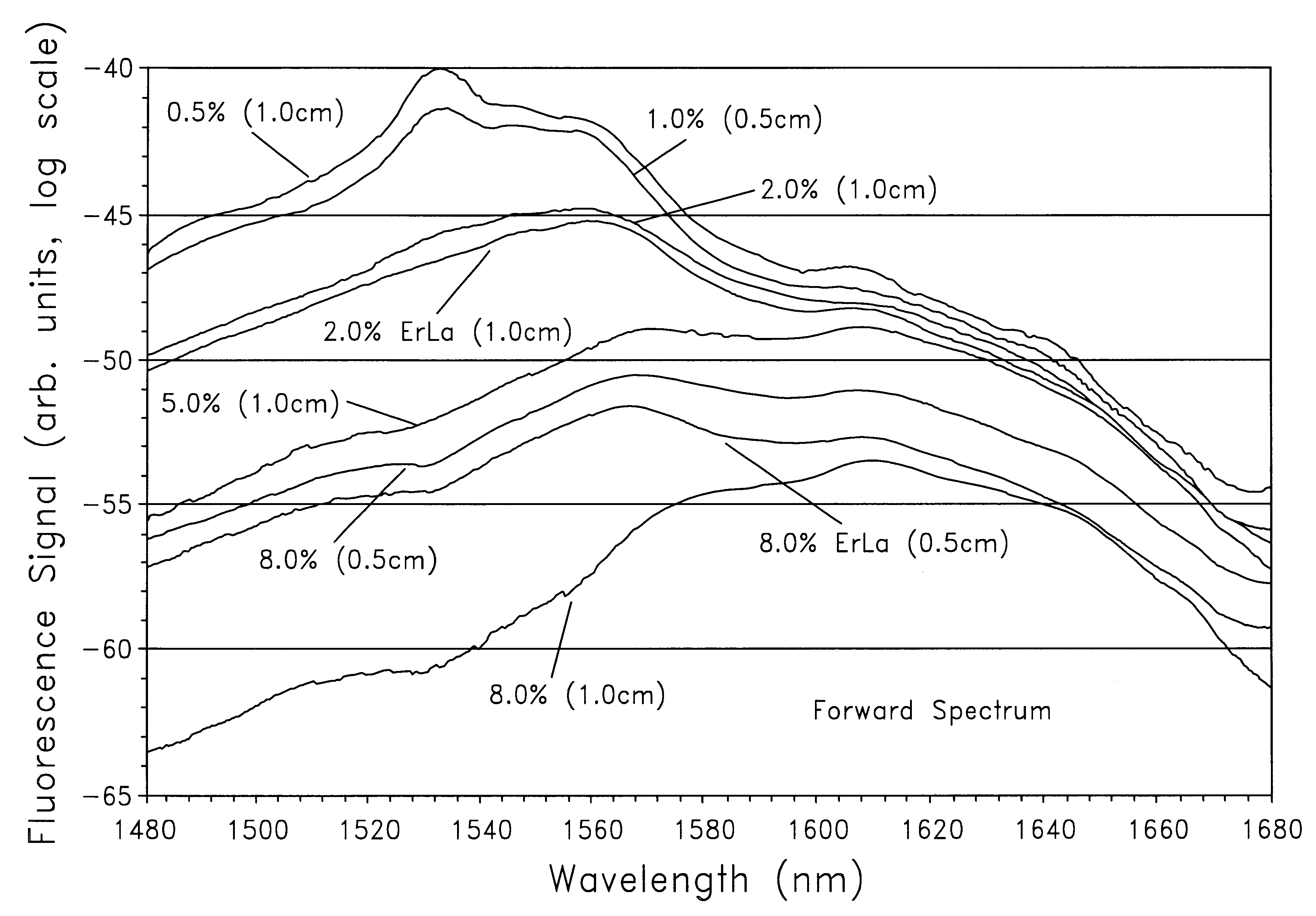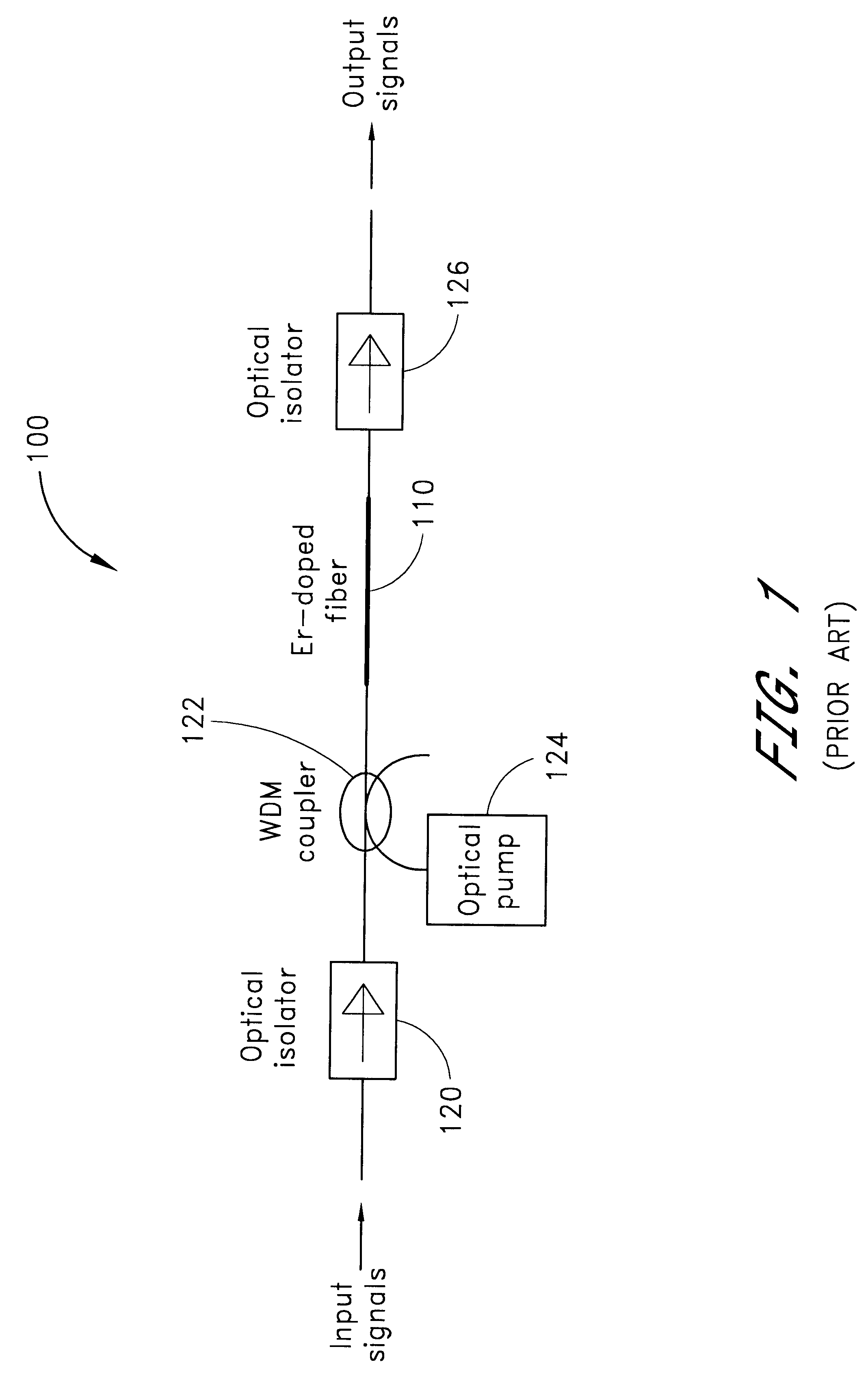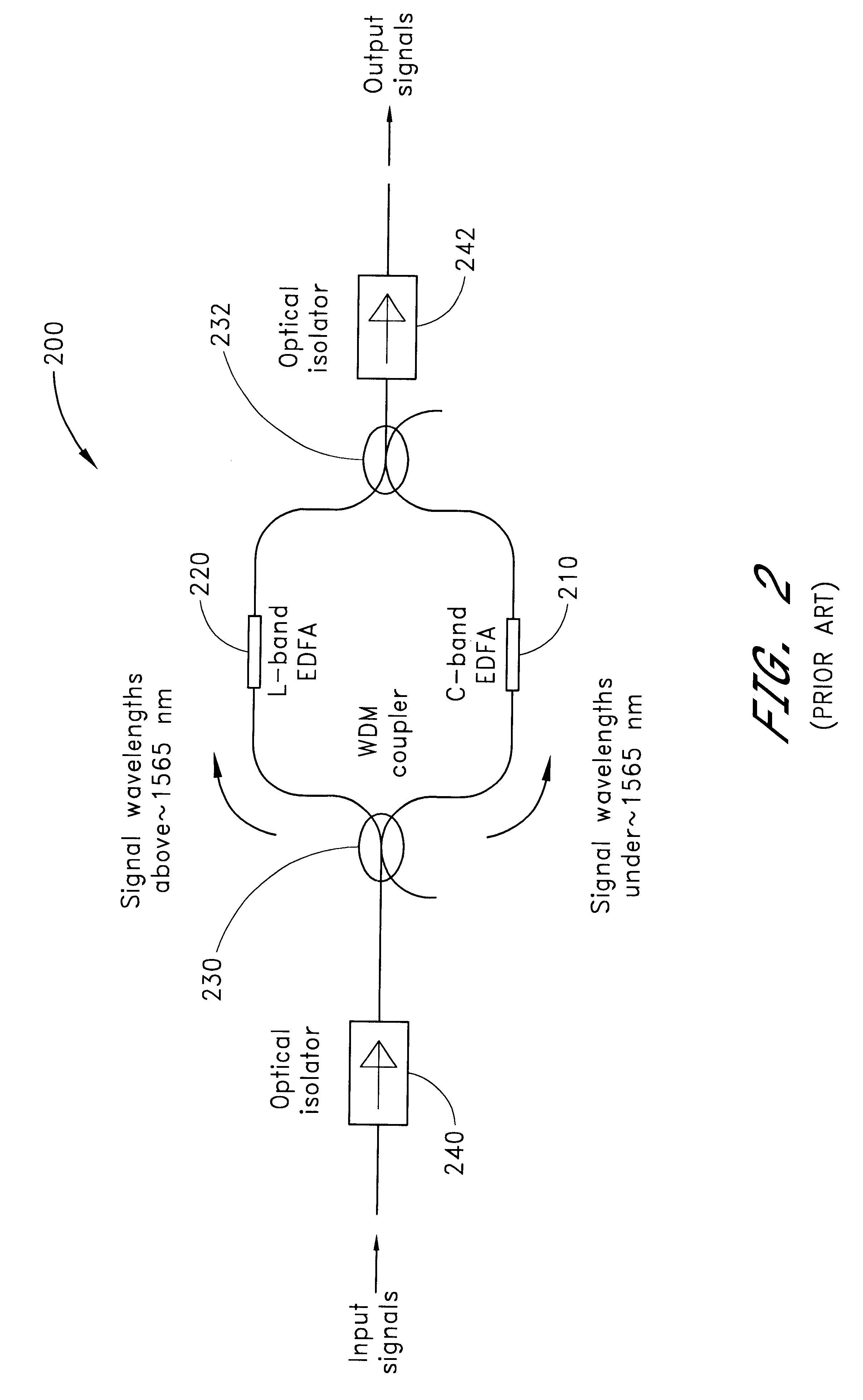Method of amplifying optical signals using doped materials with extremely broad bandwidths
a technology of doped materials and optical signals, applied in the direction of electromagnetic transmission, transmission, active medium materials, etc., can solve the problems of undesirable signal loss mechanism, further extending this limit,
- Summary
- Abstract
- Description
- Claims
- Application Information
AI Technical Summary
Benefits of technology
Problems solved by technology
Method used
Image
Examples
example 2
Fiber Drawing Using the Conical Nozzle Levitator
FIG. 18 shows the arrangement for drawing fibers from melts using a motor and wheel assembly and a conical nozzle levitation (CNL) device, to levitate and draw fibers from 0.25-0.40 cm diameter specimens, although larger specimens may be levitated depending upon their surface tension and density. A levitation gas flow 8 passes through a plenum chamber 9, through the nozzle 10 and over the levitated specimen 11. The levitated specimens are heated and melted with a CO.sub.2 laser beam 12 focused with a ZnSe lens 13 onto the top surface of the specimen. The temperature of the specimen is controlled by blocking the laser heating beam using any available means of signal blocking or by changes in the laser power. Fibers 76 are drawn from the bottom surface of the undercooled melts, using a tungsten wire stinger 77 that is fed through the nozzle and driven by a reversible stepper motor and wheel assembly 14. The stinger comprises a long tungs...
example 3
Drawing Fibers from Mullite Melts
FIG. 19 illustrates the time and temperature conditions under which fibers are drawn from undercooled melts of the mullite composition, 60:40 mole fraction of Al.sub.2 O.sub.3 :SiO.sub.2, using the fiber drawing methods of WO 97 / 25284.
FIG. 19 shows the typical temperature-time history of a levitated sample during fiber drawing experiments as a plot of the temperature measured with the optical pyrometer as a function of time. Prior to the illustrated time period, the specimen is melted with a CO.sub.2 laser beam and simultaneously levitated in an AAL apparatus in a flow of argon gas, and held at a constant temperature. The temperature range for fiber drawing is determined by drawing fibers at various temperatures using the fiber stinging and drawing device illustrated in FIG. 16 and described in Example 1. The decrease in temperature with time from 0 to 2.0 seconds of the recorded time interval shows cooling of the liquid upon blocking of the laser he...
example 4
Fibers Drawn From Undercooled Melts using Contained Systems
The description in WO 97 / 25284 also contemplates fibers drawn in contained systems. FIG. 21 illustrates a preferred embodiment of a method of supporting a liquid using a container which facilitates fiber drawing from undercooled melts without recrystallization. An important feature of the method includes establishing and maintaining a temperature gradient within the container, such that part of the molten mass is undercooled. In this method, the material of interest 30 is placed within an open container 22 such as a crucible, which container is maintained at a temperature above the melting point. A cover 25, also maintained at a temperature above the melting point, may be initially placed on the container to achieve thermal equilibrium inside the container and complete melting of the material. The cover may then be raised or removed, permitting heat loss and cooling of the melt surface. The heat transfer conditions at the me...
PUM
 Login to View More
Login to View More Abstract
Description
Claims
Application Information
 Login to View More
Login to View More - R&D
- Intellectual Property
- Life Sciences
- Materials
- Tech Scout
- Unparalleled Data Quality
- Higher Quality Content
- 60% Fewer Hallucinations
Browse by: Latest US Patents, China's latest patents, Technical Efficacy Thesaurus, Application Domain, Technology Topic, Popular Technical Reports.
© 2025 PatSnap. All rights reserved.Legal|Privacy policy|Modern Slavery Act Transparency Statement|Sitemap|About US| Contact US: help@patsnap.com



